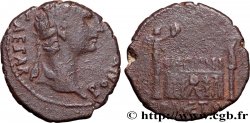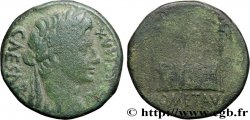E-auction 612-590973 - brm_988381 - LVGDVNVM - LYON - AVGVSTVS As à l'autel de Lyon
Чтобы принять участие в торгах, вы должны войти в систему и стать подтвержденным участником аукциона. Войдите, чтобы сделать ставку. Ваш аккаунт будет подтвержден в течение 48 часов. Не ждите до закрытия торгов, чтобы зарегистрироваться.Сделав ставку на данный товар, вы вступаете в юридическое соглашение на покупку выбранного товара и нажатием кнопки «Сделать ставку» подтверждаете принятие вами условий интернет-аукционов cgb.fr.
Ставка может бить сделана только в полном эквиваленте евро. Торги закроются согласно времени, указанному в описании товара, все ставки, сделанные после закрытия торгов, учитываться не будут. Не следует откладывать предложение вашей ставки до последнего момента, так как система может не успеть обработать вашу заявку, и ваша ставка не будет принята. Более детальную информацию вы найдёте здесь: FAQ по интернет-аукционам.
БЕСПЛАТНО.
БЕСПЛАТНО.
| Оценить : | 75 € |
| Цена : | 23 € |
| Максимальная предлагаемая цена : | 53 € |
| Конец торгов : | 06 January 2025 14:55:20 |
| Участников : | 8 Участников |
Тип As à l'autel de Lyon
Дата: c. 7-3 AC.
Монетный двор / Город: Lyon
Металл: copper
Диаметр: 25 mm
Ориентация осей монеты: 12 h.
Вес: 10,40 g.
Officine: 1re
Комментарии о состоянии
Flan centré. Des faiblesses et une usure régulière. Patine vert foncé
Ссылки в каталоге: :
LT.- - BN.4703 - C.240 (2f.) - RIC.230 - RPC.- - Giard/L1.73 /16 - BN/R.1479 - RCV.1690 (480$) - MRK.2 /103
Лицевая сторона
Аверс: легенда: [CAESAR] - PONT MAX.
Аверс: описание: Tête laurée d’Auguste à droite (O*).
Аверс: перевод: “Cæsar Pontifex Maximus”, (César grand pontife).
Обратная сторона
Реверс: легенда: ROM ET AVG.
Реверс: Описание: Autel de Lyon.
Реверс: перевод: “Romæ et Augusti”, (À Rome et Auguste).








 Cообщить об ошибке
Cообщить об ошибке Распечатать страницу
Распечатать страницу Отправить мой выбор
Отправить мой выбор Задать вопрос
Задать вопрос Consign / sell
Consign / sell
 Информация
Информация









